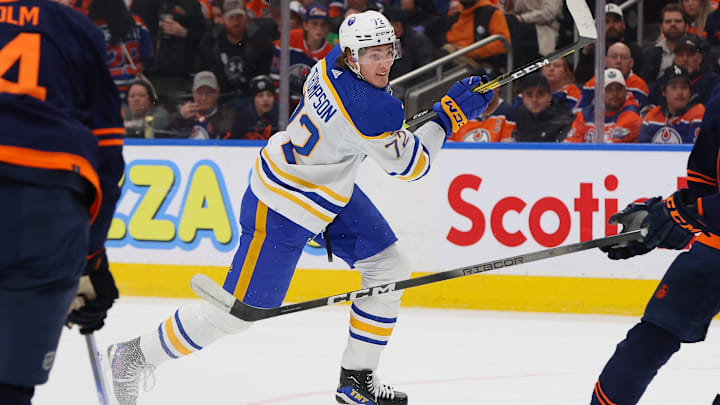A point in hockey is not something that automatically translates into what you’ll see on the scoreboard. For example, in football and basketball, you may hear the term points, and they directly reflect the score itself.
In hockey, it’s not points, but goals that dictate what the score is. So if a team combines for 12 points in a single game, you won’t see 12 points reflected on the scoreboard. Instead, there’s a chance that, with 12 overall points, the team scored just four goals, with the scorer and the two players logging an assist for each goal earning points.
Sound confusing? Don’t worry, it’s not as bad as it sounds. In hockey, up to three players can earn a point for a goal scored:
- The scorer
- The primary assist
- The secondary assist
Breaking these terms down individually, the player who scored the goal will be credited with one goal, which equals one point. The player who made the primary assist is the one who passes to the player who shoots the puck and scores, and they, too, earn a point. The one providing the secondary assist passes to one player, who then passes to the next player (the primary assist), who, finally, passes to the player who shoots and scores (the scorer).
Breaking down how players earn points in hockey
Suppose the Sabres begin a sequence in which Rasmus Dahlin carries the puck up the ice and creates space at the top of the blue line. Dahlin finds and passes the puck to Dylan Cozens, who is playing wing in this game as opposed to his usual position of center.
Cozens finds Tage Thompson at the circle and fires the puck his way, allowing for Tage to drill the puck into the net and past the opposing goaltender. In this sequence, Dahlin earned the secondary assist while Cozens took credit for the primary, and Tage, the goal.
But, if Dahlin passed to Tage from the blue line to the circle and Tage ended up scoring, Dahlin would be the only player credited with the assist. Therefore, a secondary assist won’t occur on every sequence; only when two players relay the puck to “assist” the scorer will there be a secondary assist.
Adding goals, primary, and secondary assists lead to total points
In each game, a handful of players will end up with a total number of points depending on how often they scored, or provided a primary or secondary assist. Adding up all three numbers will give that player a points total for that particular game.
So, if Rasmus Dahlin scored one goal, had one primary, and one secondary assist, he would end the game with three points. If he finished a game with one primary assist and two secondary assists, he would still have three points. And he would also finish with a trio of points if he recorded three secondary assists.
At the end of an 82-game season, the number of goals plus assists are added, and that gives the player’s overall points total for the year. When the 2023-24 season concluded, Dahlin finished the year with 20 goals and 39 assists, giving him 59 points.
Oh, and one more important note: There are two types of points in hockey - personal and team. As the headline of this article implied, we were talking about points as a personal statistic here, as points as a team statistic is appropriate for another discussion.
